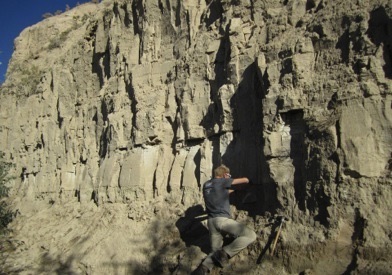Tripati Lab
Research Overview



We use the chemistry of natural compounds as a tool to understand how the Earth works. The processes we study are relevant to understanding climate change, the oceans, and the transfer of carbon between the biosphere, atmosphere, and oceans.
A primary theme of my research has been to examine the role of the carbon cycle in changing climate and seawater chemistry. Since 1997, I have worked on the calibration and application of novel geochemical methods to document and understand the evolution of temperature, hydrology, ice volume, and pH.
Research topics
• Advancing clumped isotope thermometry as a tool in the geosciences
• Studying tropical and subtropical climate dynamics, past and future
• Terrestrial climates and hydrology during the Last Ice Age and deglacial interval
• Diagenesis and the sedimentary record
• Earth’s climate history during past high CO2 intervals
• Cryosphere development and polar climates during the greenhouse-icehouse transition
• Past causes and consequences of rapidly rising atmospheric carbon dioxide levels
• Methods for studying the evolution of atmospheric carbon dioxide levels and seawater pH
Several members of my group are currently working on studying the physical geochemistry underlying clumped isotope signatures in carbonates using data and models.
We are advancing clumped isotope thermometry as a tool for accurately quantifying the magnitude of past temperature change.
Most of my group is focused on using clumped isotopes and climate model simulations to study the paleoclimate of the Last Glacial Maximum and other time intervals using both terrestrial and marine archives.
Another goal is to improve our knowledge of the role of diagenesis in altering potential archives of paleoclimate.
We have done field work in the Western US, midwestern US, central China, South of England, Italy, Arctic Svalbard, Antarctica, and the tropical Pacific.